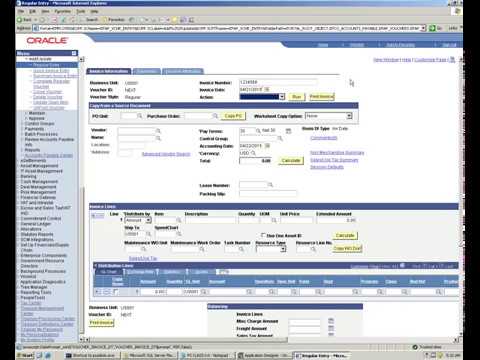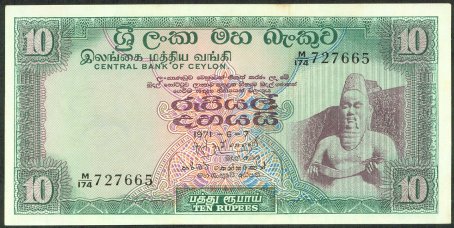Contents
Johnson has classified definition of money into narrow definition and broad definition. Money is accepted as a means of exchange or as a measurement of the value of goods. It is fascinating to imagine a world where the money wouldn’t exist.
Above all, it lets policymakers get a better understanding of future inflationary trends—how much goods and services’ prices are likely to increase. Next to narrow money, central banks also look at wide money to decide which monetary policies are needed at any given moment to keep the economy in check. Narrow money is an informal term that’s used to describe all the physical money the central Bank of the country holds. This includes demand deposits, coins, liquid assets, and different currencies. Net Foreign Assets of the banking sector comprise the net foreign exchange assets of the Reserve Bank of India and the net foreign currency assets of the banking system in India.
Monetary aggregates as at end-March incorporate data on i) scheduled commercial banks relating to the last reporting Friday and ii) the Reserve Bank relating to the last working day of the fiscal year. Monetary aggregates as at end-March incorporate data on i) scheduled commercial banks as on the last reporting Friday and ii) the Reserve Bank of India pertaining to the last working day of the fiscal year. Banks’ net lending to PDs is presently classified as part of net inter-bank assets as PDs are notified as part of the banking system in India. However, as the Working Group has treated PDs as part of the other financial corporations sector, banks’ net lendings to PDs would be part of bank credit to commercial sector. In case of March 1997, the estimate of the Working Group report has been retained.
These institutions serve as the suppliers of money or are involved in the production of money rather than being a part of the money supply. The term money supply refers only to that share of capital or cash that is governed by the people of the country. The supply of money, on the other hand, is a different concept.

M0 refers back to the forex in circulation, corresponding to coins and cash. In the United States, the Federal Reserve’s twin mandate is to steadiness unemployment and inflation. One of the methods it does that is by manipulating M2 cash provide.
Current Affairs
The recent increase reflects higher cash withdrawals by depositors to meet needs during the lockdown period and also to safeguard themselves against salary cuts or job losses. Since the end of March, 2020 currency held by the public increased by 8.2%. The shoemaker wants a loaf in exchange of his shoes but exchange value of a piece of loaf is but a fraction of a pair of shoes.

The token coins represent the value of 50 paise and 25 paise. Suppose a boy named Rahul, and his friends go out for a trip when they come across an ice cream parlour. He takes out the required cash from his wallet and pays the ice cream store right away in the first case. In this article, we mainly concentrate on the new monetary aggregates. In India, Reserve Bank of India , measures the money supply and publishes it on a weekly or fortnight basis. This article is prepared essentially to introduce the new monetary aggregates and to provide the methodology and analytical basis for the new monetary aggregates.
M2 includes all of M1 plus financial savings deposits and certificates of deposit, which are much less liquid than checking accounts. M3 contains all of M2 however provides the least liquid elements of the money provide that aren’t in circulation, such as repurchase agreements that do not mature for days or even weeks. It https://1investing.in/ is a broader definition as a result of it consists of financial institution accounts and not just notes and coins in circulation. In the United States, the 1913 Federal Reserve Act allowed federal banks to buy brief-time period securities directly from the Treasury, in order to facilitate its money-management operations.
Central Bank Money vs Commercial Bank Money
The money supply, meaning the total cash present under a nation’s economy, is bound to influence the economics of the market. Therefore, any change in the demand and supply of money will result in a consequent change in the market. The narrow money only includes the currencies and coins that are easily available for commerce. That’s the reason why this money is limited to coins and notes.
BasisNarrow MoneyBroad MoneyMeaningNarrow money is a part of the money supply that solely comprises the most liquid kind of money the general people own. It includes money in the form of notes, coins, and any deposits in people’s bank accountsThe amount of money flowing in a particular economy is referred to as broad money. That’s because the money held in these accounts are readily available whenever needed. Even if the transaction does not involve physical money, such as coins and paper notes, it will be classified as narrow money.

ClearTax offers taxation & financial solutions to individuals, businesses, organizations & chartered accountants in India. ClearTax serves 1.5+ Million happy customers, 20000+ CAs & tax experts & 10000+ businesses across India.
Money Supply and Monetary Aggregates
Broad cash may embody various deposit-based mostly accounts that might take greater than 24 hours to succeed in maturity and be considered accessible. M1 consists of M0, demand deposits corresponding to checking accounts, traveler’s checks and foreign money that is out of circulation but readily available. The interbank deposits, which a commercial bank holds in other commercial banks, are not to be regarded as part of money supply. The total stock of money in circulation among the public at a particular point of time is called money supply. Deferred payments are payments which are made sometime in future.
- Currency in circulation includes notes in circulation, rupee coins and small coins.
- Monetary aggregates as at end-March incorporate data on i) scheduled commercial banks relating to the last reporting Friday and ii) the Reserve Bank relating to the last working day of the fiscal year.
- It emphasizes money as a store-of-value more so than as a medium of exchange — hence the inclusion of less-liquid assets in M3.
- It should be mentioned that the adoption of a specific monetary standard in a country at a given moment is determined by the country’s economic conditions.
According to the research, the European Union is the leading economy in terms of narrow money. Other economies that hold a significant amount of coins and physical notes are Japan and China. America and Germany are in the fourth and fifth positions on the list of the economies with the largest stock of this physical money. M1 and M0 are the official terms used to define narrow money in the United States and the UK respectively.
Why is m3 considered as broad money?
Money as standard of deferred payments helps to solve the barter problem of lack of standard of deferred payment. Again it helps to make contracts which involve future payments. Money, thus, acts as common medium of exchange, a common measure of value, as broad money refers to stamlard of deferred payments and a store of value. Explain ‘standard of deferred payment function’ of money. All efforts have been made to ensure the information provided here is accurate. However, no guarantees are made regarding correctness of data.
According to recent Reserve Bank of India data, the uncertainty caused by the Covid-19 pandemic has led to a surge in money supply. It facilitates exchange of goods and services and helps in carrying on trade smoothly. The present highly complicated economic system will not exist without money.

